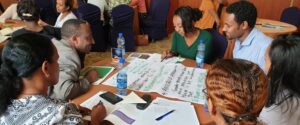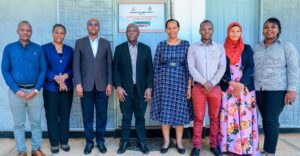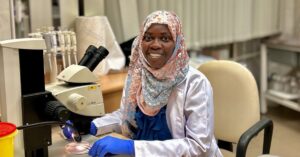World class universities – or world class systems?
The idea of ‘world class universities’ grips the higher education sector, driven by several big international rankings. It’s an idea that is no less popular when it comes to many of the countries in which INASP works. But when it comes to research and higher education for development, is it world class universities that we should be pursuing?
Different institutions to do different things
Goolam Mohamedbhai argues that what African higher education needs is ‘mission differentiation’, namely a range of institutions doing different things. Rather than focusing on creating new universities, governments should instead be supporting existing institutions in different ways – some to become more research-focused, and some to concentrate more on undergraduate education. ‘It would be impossible, and unnecessary, for most staff in all tertiary institutions on the continent to have a PhD’ he argues. In a similar vein, Lynn Meek argues that our emphasis should be on ‘world-class systems’, not single top institutions.
This is more than just a matter of semantics. An important shift occurred in the last decade or so: higher education has received steadily more attention from international institutions and bilateral donors, and this has in turn helped to improve its place in national policy making. One expression of this has been new funding for ‘centres of excellence’, or in some cases ‘networks of excellence’ between leading institutions. These are certainly important, helping to develop hubs of expertise, postgraduate training and research. But often these are located at leading institutions in growing capital cities, with the danger that, with limited funding accruing to a smaller number of institutions, higher education’s broader base is neglected as a result.
Dangers of distortion?
Of course there’s a compelling argument to focus investments on a smaller number of institutions – resources are limited, and there’s an urgent need to increase research and teaching capacity. But research and training with the potential to support national development takes place in a whole host of institutions. As Jamil Salmi (the World Bank’s former tertiary education lead) warns, the pursuit of world-class institutions can create ‘dangerous distortions in resource allocation in favour of a few flagship institutions, to the detriment of the overall tertiary education system’. There’s also the problem – as this report suggests is the case in Pakistan – that a concentration of research institutions in a couple of centres can mean that needs at a provincial level are not met.
Laying the foundations
One very practical way to ensure this balance, and to help us move towards world class systems, is to focus on the foundations that support this. One such foundation is access to research literature, in the form of e-journal collections. INASP believes that broad, national access to these collections is important precisely for this reason. We work with publishers to achieve this by negotiating for national licenses, and with partner countries to support the development of national purchasing consortia. This means that many universities, colleges, research institutes, teaching hospitals and other research institutes gain access – not just one or top universities.
We’re still learning what a ‘national research and knowledge system’ looks like and what a ‘world class system’ might mean. But by taking a national approach we hope we’re helping to strengthen the network of institutions that will make up a viable system of research and training – providing a foundation on which countries can build their own institutions, as they see fit, to serve their own development needs.




